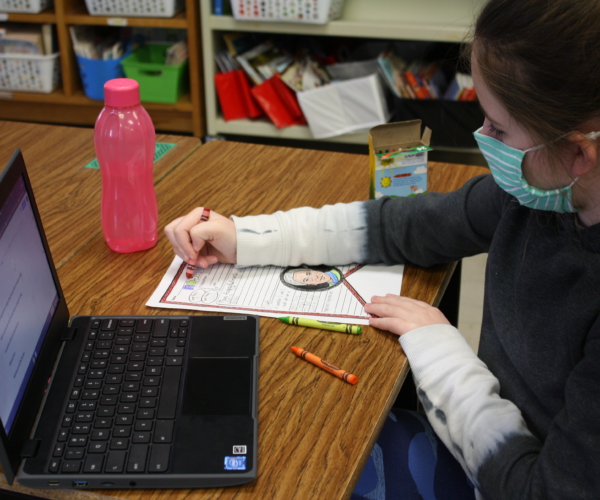Enhancing the use of technology as a family engagement tool is one of the top goals leaders in Bloomington Public Schools District 87 have for fall 2021.
That, along with hoping all students will be able to return for in-person instruction, says Diane Wolf, the Illinois district’s assistant superintendent for curriculum and instruction.
All that means the district is carefully considering how to spend American Cares Act and other stimulus funds.
“We want to be extremely diligent about how we spend this money because it will build or break trust with our communities,” Wolf says. “We have to be very transparent about what we’re spending the funds on and why.”
Here how the district’s leaders are considering capitalizing on technology, adjusting instruction and spending stimulus funds as they look forward to more in-person learning in the fall:
1. Family engagement
Face-to-face Zoom meetings are, of course, more personal than phone calls and also allow students to participate. They provide flexibility for parents who have to juggle work schedules, caring for children and transportation issues, Wolf says.
“Doing parent-teach conferences on Zoom, for instance, has been really beneficial to our families,” she says. “You can see body language and hear tone of voice, and you can build some trust.”
More from DA: Revving up the ‘curiosity engine’ in inclusive class discussions
Bloomington educators have also provided remote coaching for parents in helping children with homework. The district also offered a half-hour “Family University” webinar for parents whose students are transitioning from kindergarten, sixth grade and ninth grade.
The district has put videos on its website so students can check out their new schools if they get anxious about the coming school year.
“We’ve had to up our game to make sure that parents understand what school is and what they can do to help,” Wolf says.
2. Continued online learning
The district is now 1-to-1 in all grades and educators will work to incorporate that technology more deeply into everyday learning,
That alternative could be offered during small group or individualized instruction that could be tied into remediation or enrichment. It could also allow students to take specialized courses—astronomy, for instance—not offered by the district, she adds.
“Instead of saying we’re going to stick you in a class that you’ve already failed—maybe you haven’t failed whole class, maybe you only failed part of it,” Wolf says. “Why not dig deep on where the failure was, retake the unit and move on.”
3. Faculty and facilities
As for stimulus funding, Bloomington’s leaders plan to use ESSER II to hire more academic interventionists and social workers, says Diane Wolf, the assistant superintendent for curriculum and instruction.
The investment will benefit students, even if the funds expire within the next three years, Wolf says.
Also, after the COVID stimulus runs out, districts across the country will continue to experience teaching shortages that could be filled by personnel hired in the coming months.
“The jobs are still going to be there in a couple of years—people are not flooding into the teaching profession,” Wolf says.
The district is also considering using stimulus funds on capital improvements such as building more collaboration spaces for teachers.
“We want to create spaces that will be good in two years, five years, 10 years,” she says. “We want to be extremely diligent about how we spend this money because it will build or break trust with our communities. We have to be very transparent about what we’re spending the funds on and why.”









